Overlooking a minor area of mold development in your basement or guest bathroom is simple. Nevertheless, all forms of mold have the potential to cause health problems, highlighting the significance of its immediate removal.
Mold removal costs $871 on average with the real range being $250 to $3,500. Mold remediation cost depends on several factors such as the size of your house or room where there is a mold problem, type of mold, and inspection costs if any.
You can skip straight to getting some estimates from local mold removal service or read on for more details cost information.
What we cover
ToggleAverage Cost of Mold Remediation Per Square Foot
If an inspection by a qualified expert reveals that the mold problem you are dealing with is mild, they might recommend mold remediation as opposed to mold removal. Using data from a variety of companies dealing with mold removal and remediation in the USA, the average cost for mold remediation services ranges between $10 to $25 per square foot.
Mold remediation focuses on restoring the mold levels to natural levels where the mold is not considered toxic to occupants and can’t be eliminated because of the natural environmental conditions in a building or room. Remediation is relatively cheaper and more straightforward than mold removal that requires a lot of manhours and preparation.
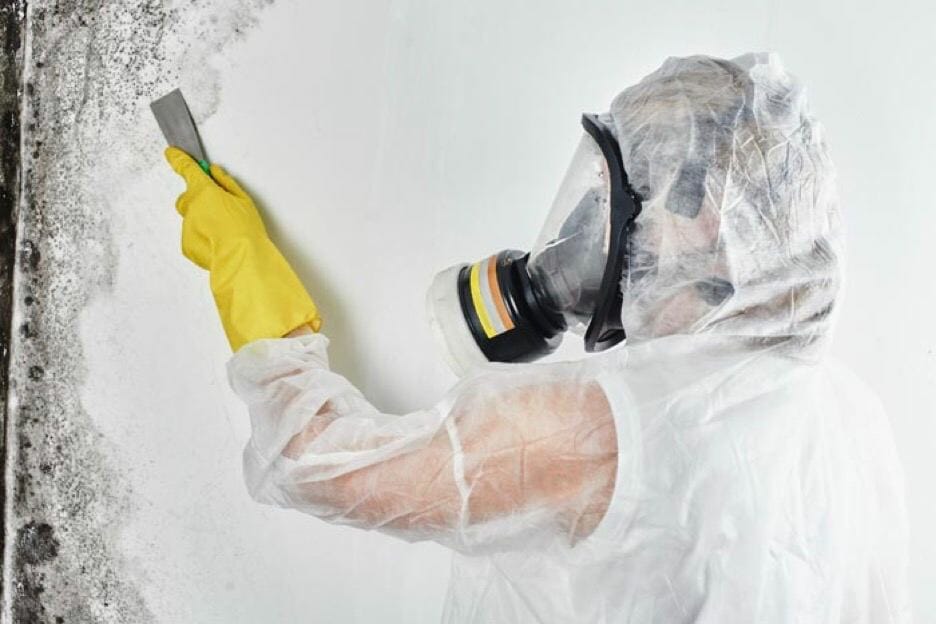
Mold Removal Cost by Location & Surface
Sometimes, mold removal companies will give you a quote based on the location or surface where the mold is to be removed. For instance, it might cost a little more to remove mold growing inside ceilings or roof cavities than it does for living areas and bedrooms. Here are some estimates for mold removal or remediation based on location or surface:
| Mold Location or Surface | Estimated cost |
|---|---|
| Entire Houses/Buildings | $2,500 to $4,500 |
| Living Areas – Living room, Corridors | $700 to $2,000 |
| Washrooms, Toilets, and Showers | $350 to $1,500 |
| Small spaces- study rooms, and fireplaces | $75 to $350 |
| Crawlspaces | $350 to $3,500 |
| Entire rooms- Bedrooms and offices | $900 to $1,350 |
| Attic | $355 – $2000 |
| Bathroom | $225 – $1500 |
| Basement | $350 – $3200 |
In most cases, you will have the mold removal company do a thorough inspection of the entire house or office building before they can give a quote on removal and remedies. This is important because missing even a small patch of mold in one area would mean that the mold could still spread.
At the same time, rooms with fans and air conditioning units could spread the mold to other rooms thus affecting even those in other parts of the house. The mold removal company will also recommend fixes that will prevent the formation of mold in the future such as fixing a leaking roof or increasing airflow and heat in a particular part of the house or building.
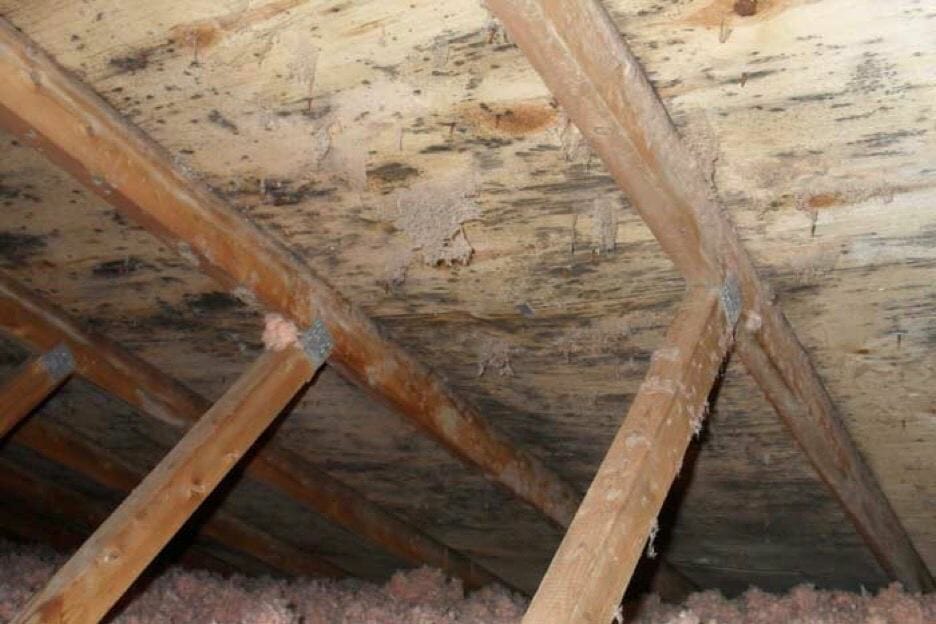
Black Mold Removal Cost
Black mold is one of the more dangerous of the mold types. The remediation of black mold will cost an average of $622. The estimate given by black mold removal experts will depend on the location and amount that needs remediation.
You can pay as little as $250 for small patches of black mold removal, but to remediate black mold from an entire attic or basement, it could cost upwards of $2000.
Attic Mold Removal Cost
Attics are prone to mold because of their location and environmental conditions. A leaking roof or crevices on attic windows will let in a lot of moisture that will eventually lead to mold formation. Attic mold removal costs between $355 to $2,000 depending on the size of the attic and other factors. Ensure that the inspection team pays close attention to the attic when doing a full house inspection, as it’s often overlooked.
Bathroom Mold Removal Cost
Mold can easily form inside bathrooms and shower areas because of dampness and lack of air circulation. Bathroom mold is extremely hard to detect as it usually forms on hidden crevices and corners such as below sinks and toilet bowls. Expect to pay an hourly rate of about $35 to $75 and amounts in the range of $250 to $1,500 to have the mold removed or remediated in bathrooms and shower areas. These because bathrooms are generally harder to work in and require more specialized checks.
Basement Mold Remediation cost
Most mold removal companies would consider the basement as hard to access areas and will consequently attach a premium price to working in those areas. Rates for removing any type of mold in basements is more or less the same as crawl spaces so expect to pay amounts in the range of $350 to $,3,200 depending on the size of your basement, how hard it is to access, and the size and type of mold growing in it.
Basements are easy to ignore when it comes to mold formation yet they happen to the most vulnerable. Ensure that any leakage or moisture in your basement is eliminated before it causes mold formation. Mold in the basement will generally affect the entire building because of the air rising to the above rooms.
Should I Get Mold Inspection and Air Sampling First?
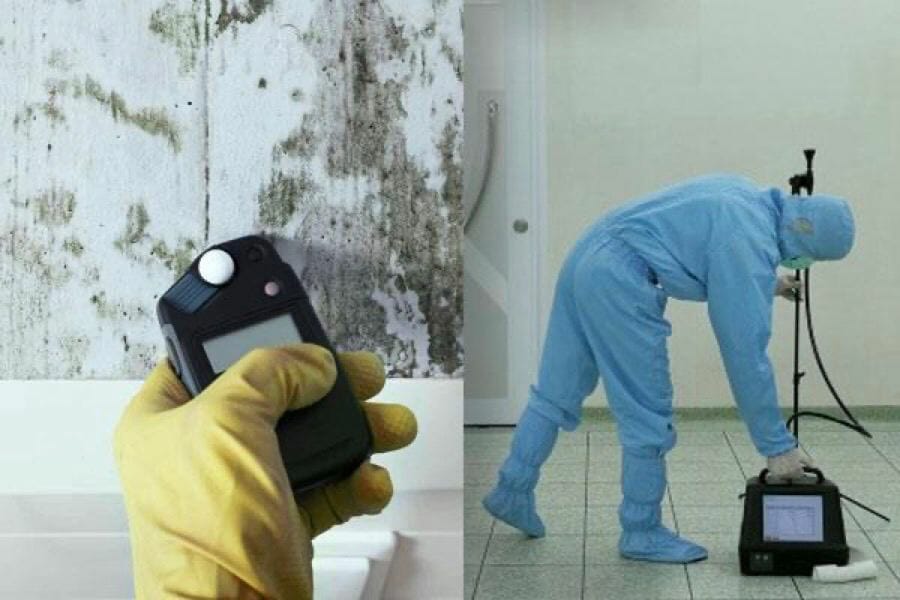
It’s important to have an accurate picture of the mold problem before you decide whether it’s a remediation or removal job. You, therefore, need a mold inspection, and air sampling done by a qualified inspector, a public health official from your local council, or a mold removal company before you move ahead.
In the USA, mold inspection and air sampling services can be procured from mold removal companies or, in some cases, conducted by certified local health officials. Some mold removal companies will offer to do free inspections and give a free inspection report at the end of the exercise.
Mold inspection and air sampling should involve the following activities aimed at determining the presence of mold, how big or how far it has spread, and what kind of mold it is:
1. Visual Inspection
Some types of mold are easy to spot by a simple visual inspection if they are growing on an accessible or well-lit surface. It may be the method you used to identify that you may have a mold problem in the first place. A certified occupational hygienist or health inspector will be able to identify what type of mold it is by looking at it or photographing it for analysis.
2. Automated Testing
Next, the contractor or certified professional will use a range of tools to test whether there is mold in your building. This will mostly involve using moisture detection tools, air quality, and particle count testing, using sophisticated infrared imaging tools to check surfaces, and other tools of the trade. The results from each test will be recorded and included in the final report to help you and the company decide on the best remedy (remediation or removal).
Some of the equipment used during a mold inspection and detection include but are not limited to:
Moisture testers – These are mostly handheld devices that can detect excess moisture on ceilings, drywall, floors, furniture, and other surfaces. The main aim is to detect residual or active moisture on various surfaces that may lead to the formation of mold. Moisture testers are essential during mold remediation because they can help you prevent further growth.
Infrared Equipment – This might include specialized imaging devices or infrared cameras that can scan various surfaces and produce thermograms. They are used to detect invisible moisture and mold that a simple visual inspection or moisture detector cannot see. Infrared cameras are used by qualified thermographers and will give a very accurate picture of the mold problem in your house. The images can be automatically analyzed to determine which type of mold it is.
Other equipment that may be used during the inspection include:
- Particle scanners
- Air sampling tools
- Laser rulers
- Borescopes
- Tape lifts
- Smoke pens
- Hygro-thermometers, among others
3. Chemical Testing
This involves using various chemical swabs to take samples from the surfaces in your house for testing. Chemical testing is done more meticulously and can give a clear indication of the nature of mold contamination and toxicity levels.
Chemical test results can be included in medical reports where mold poisoning is suspected for various health conditions, especially where there is a lawsuit involved or where the occupants are taken ill. The test can be instant for certain mold types or need a bit more time to be tested in a well-equipped lab for more conclusive test results.
Chemical tests are usually done on request and charged unless the mold removal company decided to include them. A single sample or swab done onsite would cost between $35 to $50 while the sophisticated lab test could cost between $40 to $100 per test depending on the mold type.
In addition to identifying the mold and recommending the proper solution, the inspection team can also help you identify the main and secondary causes for the mold. For instance, they can identify water or moisture sources, cracks, and crevices, badly lit rooms, faulty air conditioning units, etc. This will help prevent future growth after the remediation or removal has been done.
Do not wait for a mandatory mold inspection to be conducted on your premises if you are a business as it may open you up to lawsuits. Instead, you should schedule mold inspections and air sampling regularly to protect your employees’ health as required by law.
The amount you end up paying may depend on the size of the building or space in question but will also be influenced by the following things as quoted by the company involved in the removal:
1) Location of The Mold
The remediation job might appear straightforward as it is only meant to reduce a mild mold problem at first. However, you may have to pay a little more if the mold being removed or reduced is located in hard to access areas such as attics, inside ceilings, behind walls and wall units, and packed basements. For instance, it would take a lot of time and effort to remediate mold that has grown inside a ceiling or tightly packed car garage with other items in the way.
2) Type of Mold to Be Remediated
Some types of mold (such as black mold) are extremely toxic even to experienced removal crews and would naturally require more work to remediate or reduce safely. Of course, this might not be a significant factor for a remediation job but it is still worth considering as you estimate or negotiate with the company.
3) Amount of Mold to Be Remediated
It might be a small room but with a bad mold problem or a large hall with patches of mold to remediate. In such cases, basing a quote on square feet alone wouldn’t make a lot of sense for you or the company doing the job. Sometimes the inspection might reveal that the mold size should be given precedence over other factors when giving a quote. However, the final cost shouldn’t be too far away from the average cost of $10 to $25 given earlier.
FAQ’s
How Long Does Mold Removal Take?
It would take anything from a day to a week or two to remove all the mold in a building including inspection and cleaning. However, this depends on the size of your house and other factors such as logistics and scheduling. Your mold removal company should be able to provide a fixed timeline within which they will remove the mold.
Unlike pest removal, buildings subjected to mold remediation or removal can be occupied immediately after the cleaning crew has completed its work. However, it might take longer to obtain a permit if the inspection was conducted and removal ordered by a court or local OSHA authorities.
How Can I Prevent Mold from Returning?
Yes, and there are several measures you can implement to ensure the mold does not return or is kept at manageable levels. Most of these will be implemented by the mold removal company after removing or remediating the mold.
Start with controlling humidity in the building to recommended levels depending on the weather conditions in your location. You can use AC equipment and remodel the opening in your house or building. Other measures you can take include:
- Use vapor steam cleaners and disinfectants to clean surfaces and damp corners such as washroom sinks and bathtubs.
- Ensure that all leaks are fixed across the entire building paying close attention to crawlspaces, basements, and small spaces.
- Ensure that the basement is properly ventilated and insulated to prevent dampness and moisture accumulation.
- Avoid storing wet items in poorly ventilated rooms and spaces. This includes wet towels and other clothing that is often forgotten inside bathrooms for long periods.
- Install big windows and AC systems to improve airflow inside a building.
- Scrub any tiny mold formation off while observing the correct precautions. Avoid touching or cleaning black mold on your own without the current personal protective equipment
- Ensure that your kitchen surfaces and walls are dry at all times
Does Insurance Cover Mold Remediation?
This depends on the type of cover and the insurance policy you have on your contract. Most insurers will have mold removal or remediation as part of the cover if it causes some type of damage to the home. You can check your policy to see if damage caused by mold is covered.
Is Mold Dangerous for My Health?
Some types of mold (such as black mold) pose serious dangers to your health. For instance, prolonged exposure to black mold has been proven to cause a number of respiratory problems to both humans and domestic animals.
Is It Safe to Live in A House During Mold Remediation?
No, it is not a good idea to be in a house when mold remediation is taking place without the proper personal protective equipment unless it’s a mild job that does not involve using commercial cleaning agents and blowers. You can give the removal company a few days to finish the job and clear the house for occupation
What Chemicals Are Used in Mold Remediation?
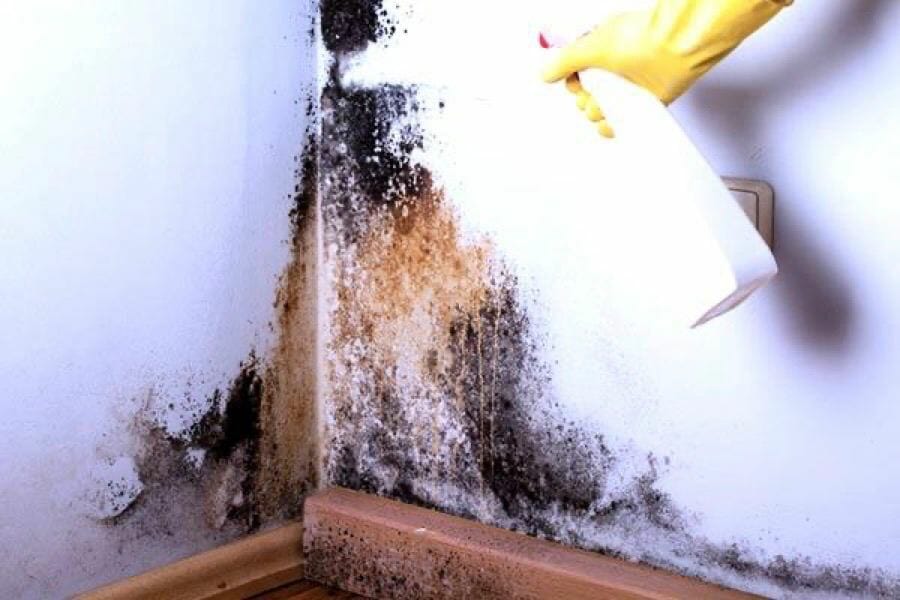
Several environmentally friendly chemicals are currently approved for mold remediation in the USA. Some companies use a mixture of disinfectants and cleaning agents while others rely on machines such as air scrubbers. Your mold removal company will decide which chemicals are suitable for the job after inspecting your property.
Should I DIY Mold Removal?
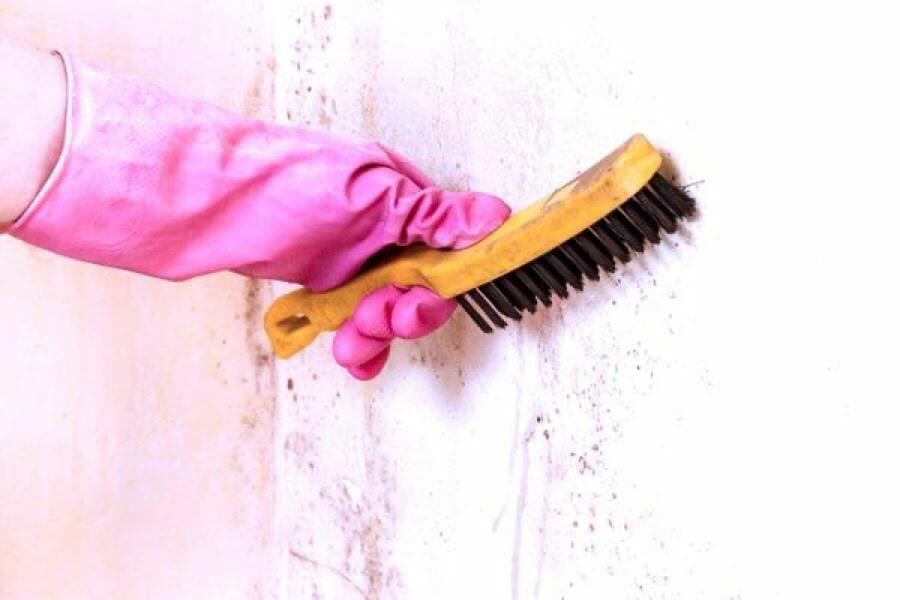
No, it’s not advisable to do DIY mold removal unless you have the required PPEs or if you are dealing with a mild mold problem. Seek advice from a certified pro before going the DIY removal route.













